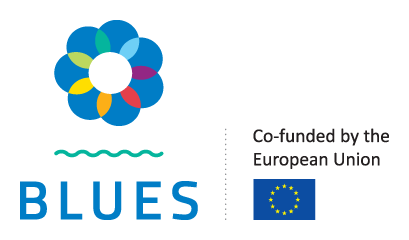
Iveta Jurgensone and Astra Labuce are experts involved in Activity 2.3 (pelagic habitats). They are researchers at Latvian Institute of Aquatic Ecology, a research organisation focusing on functioning and health of marine and freshwater ecosystems. Iveta is an expert of phytoplankton and she is a chairlady of HELCOM Expert Group on Phytoplankton (EG PHYTO). Astra has expertise in zooplankton taxonomy and ecology and she is a member of HELCOM Zooplankton Expert Network and ICES Working Group on Zooplankton Ecology.
What is your Activity/Task in HELCOM BLUES all about? What main challenges and/or pressures on the Baltic Sea does it try to solve?
Our activities (Actvity 2) and tasks (subtasks in Task 2.3) in the project are focused on the pelagic habitat including both phyto- and zooplankton communities. Besides the work on HELCOM-approved indicators, we are also testing the life form pair approach in several regions of the Baltic Sea. Lifeforms are functional groups constructed based on biological traits. The approach could become an important tool in evaluating the status of the pelagic habitat and help to better understand the drivers and impacts of environmental pressures. However, one of the main challenges is to define ecologically relevant life form pairs as the functional diversity in the Baltic Sea is low. In HELCOM BLUES, we make the first steps by directly testing the method developed for North-East Atlantic waters to the Baltic Sea data and situation.
What are the planned outcomes of your specific BLUES Activity/Task?
The main output of the activities will be improved coverage for zooplankton and phytoplankton indicators, resulting in a nearly pan-Baltic level. Moreover, testing the lifeform pair approach will give new insights into gaps in our data and monitoring and enable as in doing an evaluation of unified pelagic habitat assessment approaches.
How will your BLUES Activity/Task benefit your organization in particular and the Baltic Sea in general?
The results of HELCOM BLUES will strengthen the implementation of EU Marine Strategy Framework Directive in the Baltic Sea and also in Latvian waters that are monitored by our organisation for more than 25 years. Hence the environmental assessment made during the project based on the long-term dataset that our organisation has collected is the main benefit. Additionally, the project activities have been challenging at times and we both have gained experience and knowledge for future work towards researching the processes in the Baltic Sea.

